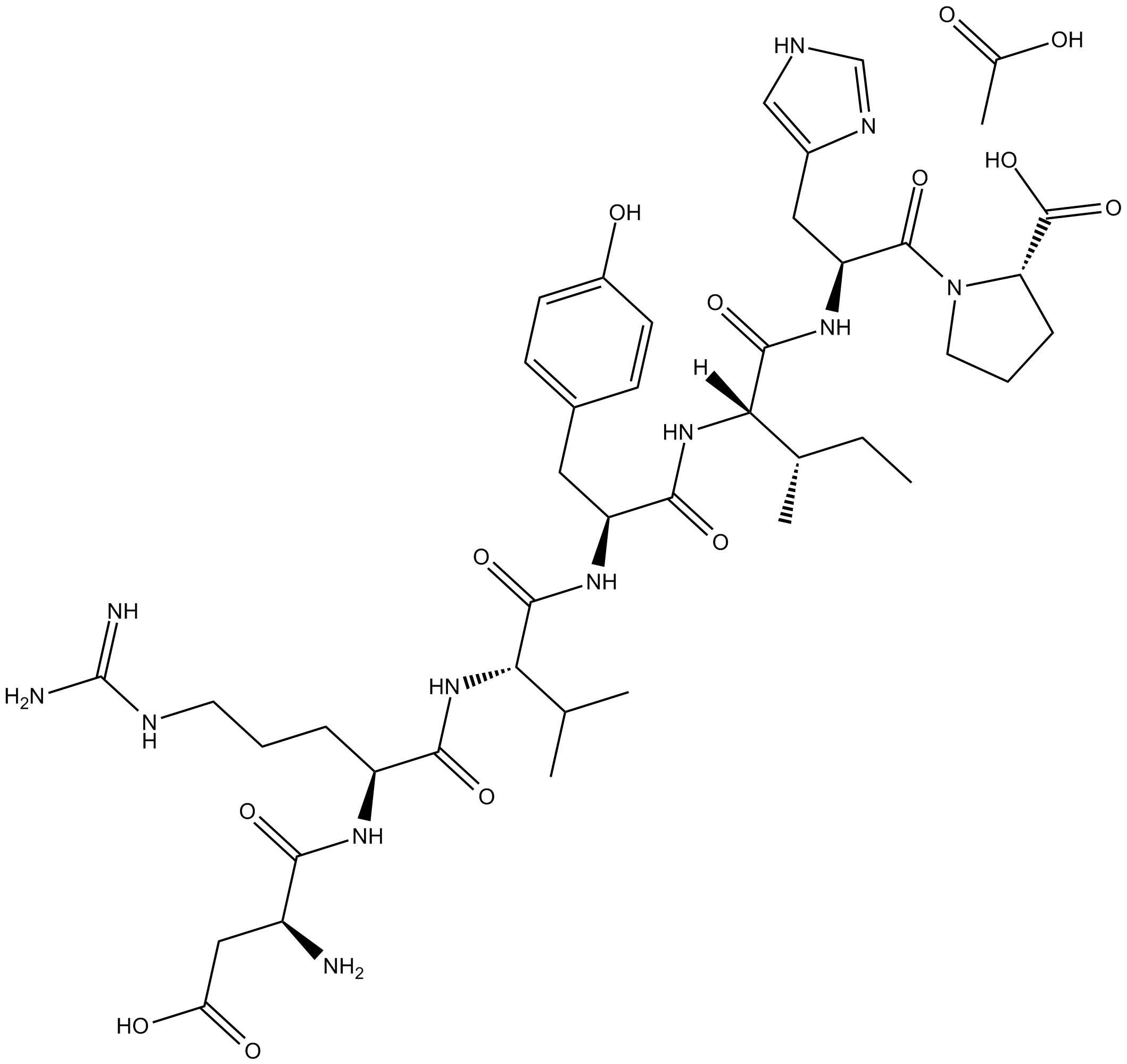Angiotensin Fragment 1-7 (acetate) |
| Katalog-Nr.GC12671 |
type 1 angiotensin II receptor agonist
Products are for research use only. Not for human use. We do not sell to patients.

Sample solution is provided at 25 µL, 10mM.
Angiotensin Fragment 1-7 is a type 1 angiotensin II receptor agonist.
In the renin-angiotensin system, angiotensin I is cleaved by angiotensin-converting enzyme to form angiotensin II, which has effects on fluid and electrolyte, as well as homeostasis blood pressure.
In vitro: In a previous study, peripheral atherectomy plaques collected from diabetic (DM) and 12 non-DM patients were immunostained. Results showed that the tissue contents of ACE2, angiotensin fragment 1-7, and AT1R were increased in DM when compared to non-DM. IL-6 and TNF-α were also increased in DM when compared to non-DM, as well as macrophage infiltration score and neovessel counting [1].
In vivo: The effects of chronic angiotensin fragment 1-7 treatment was studied in an experimental model of the metabolic syndrome, rats given high-fructose/low-magnesium diet (HFrD). After 6 months, angiotensin fragment 1-7-treated animals had lower body weight, total fat mass, and serum triglycerides, improved glucose tolerance, and better insulin sensitivity. Similar metabolic effects were also evident, albeit in the absence of weight loss, in rats first exposed to HFrD for 5 months and then subjected to short-term treatment with angiotensin fragment 1-7 [2].
Clinical trial: So far, no clinical study has been conducted.
References:
[1] Purushothaman, K. R.,Krishnan, P.,Purushothaman, M., et al. Expression of angiotensin-converting enzyme 2 and its end product angiotensin 1-7 is increased in diabetic atheroma: Implications for inflammation and neovascularization. Cardiovascular Pathology 22, 42-48 (2013).
[2] Marcus, Y. ,Shefer, G.,Sasson, K., et al. Angiotensin 1-7 as means to prevent the metabolic syndrome: Lessons from the fructose-fed model. Diabetes 62, 1121-1130 (2013).
Average Rating: 5 (Based on Reviews and 3 reference(s) in Google Scholar.)
GLPBIO products are for RESEARCH USE ONLY. Please make sure your review or question is research based.
Required fields are marked with *




















